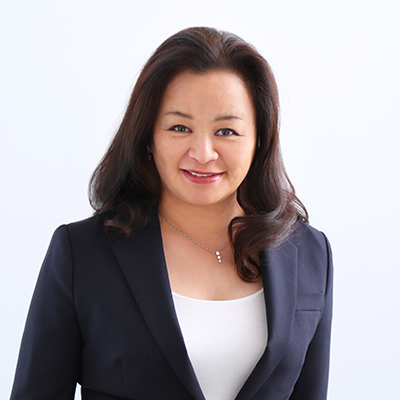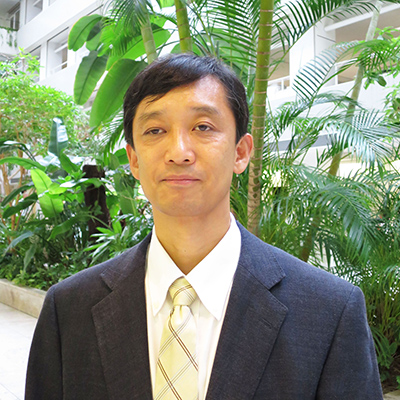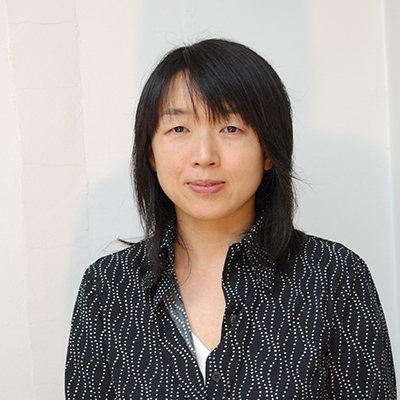As a role of lighting design in public spaces is becoming increasingly important in Japan as a super-aging society, and also for the 2020 Olympics and Paralympics, there is a growth in demand for the spatial improvement from the perspective of universal design (UD). Toshiaki Hara, an experienced UD consultant from Kajima Corporation, and Miki Matsushita, an experienced lighting consultant for public spaces, have discussed the role of lighting design.

To begin with, Hara questioned if – despite the visual impediment – the spatial information can be obtained with the human senses such as hearing and touching. At a crowded station, do we really recognize stairs by visual information alone? The clue may be the footsteps that go up and down the stairs; which means the spatial information can be obtained using five senses such as hearing and touching other than visual. He mentioned his belief in the essence of creating a people-friendly space. The culmination of such essence can be seen in the project of Fukuoka City Subway Nanakuma-Line, which Matsushita was involved in.
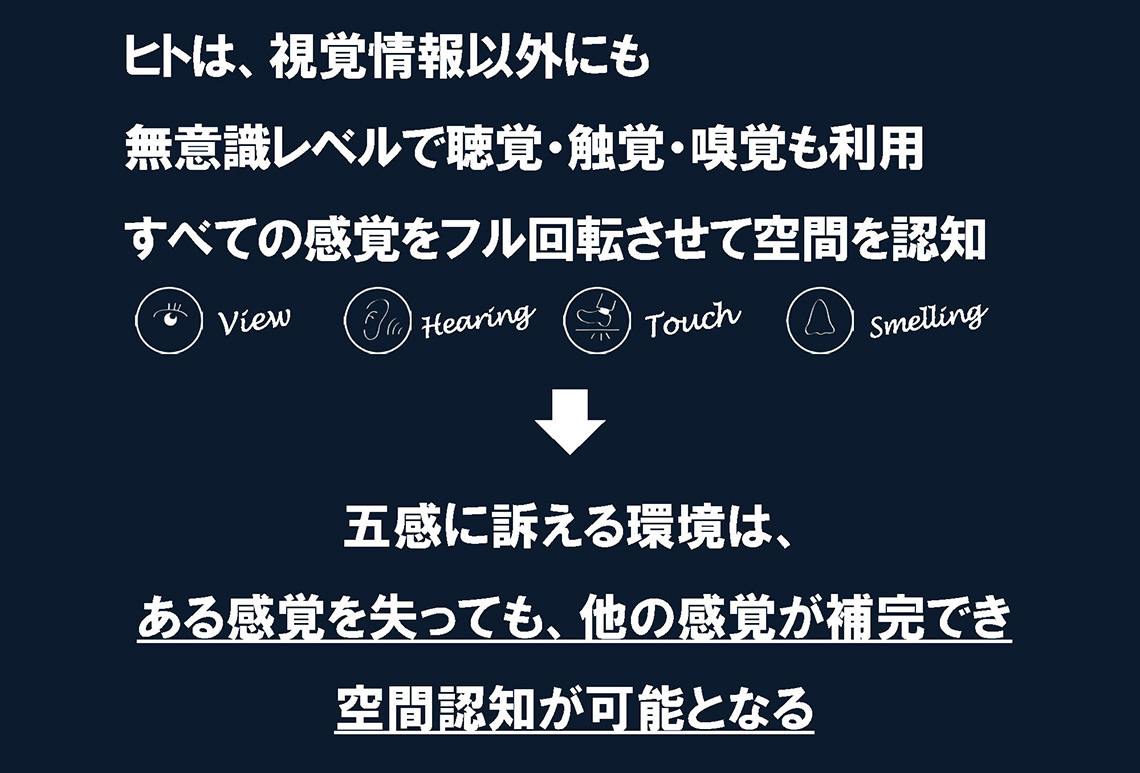
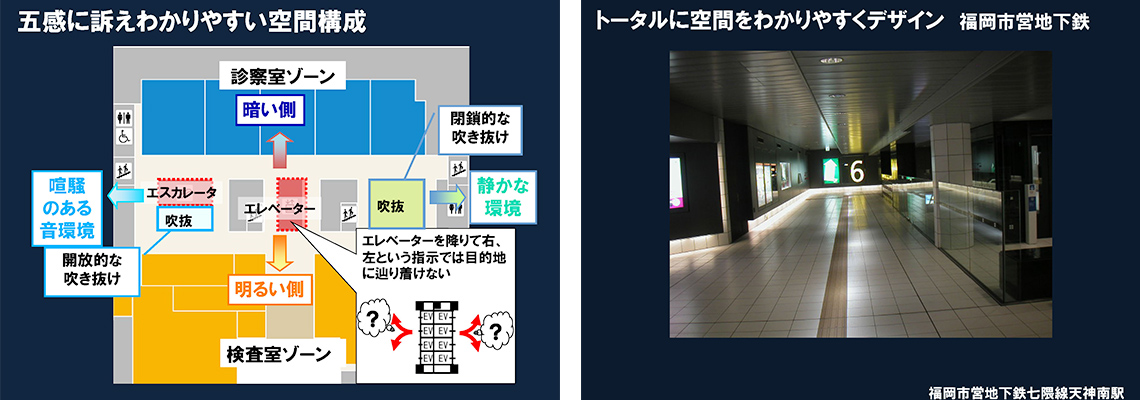
Matsushita said that she started by total-designing Nanakuma-Line in order to make it a people-friendly subway. Based on the review committee and careful surveys, she derived the four perspectives: “Human Line,” “Human Mind,” “Community Mind,” and “Advance Mind.”
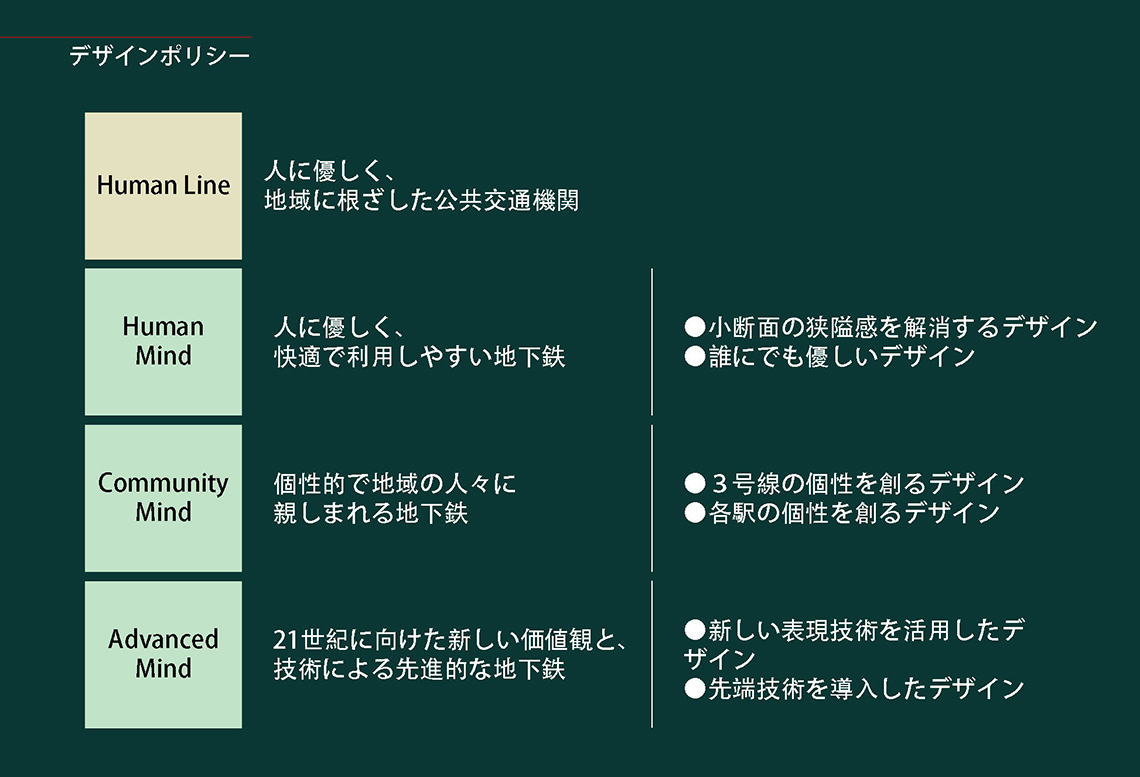
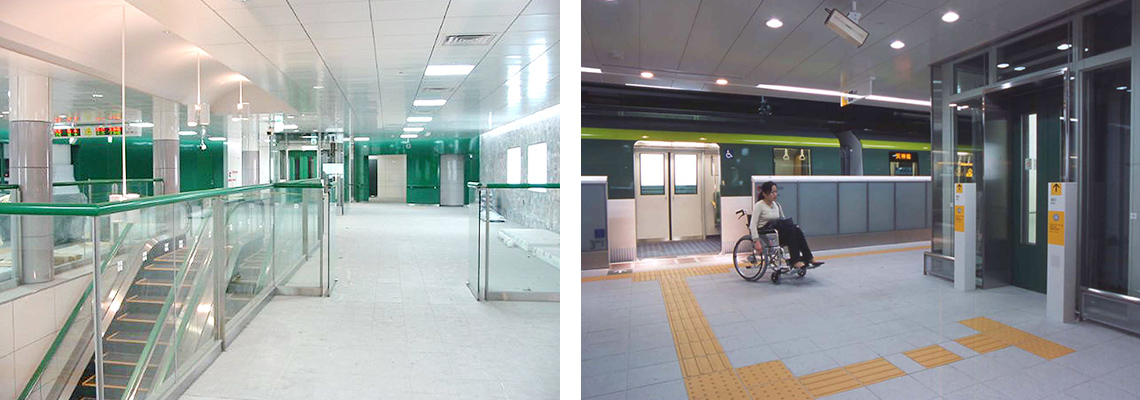
“As for lighting, in order to eliminate the narrowness, I reached for indirect lighting, as well as heightening the ceiling as much as possible; and also strove for explicitness for people with low vision by changing the color temperature in front of the platform doors to give contrast.” In addition, on the theme of “visibility ,” “mobility,” and “perspicuity” at the station, traffic lines, ticket machines, and the color and size of the sign are examined by perspectives of people of the wheelchair, people with low vision, and healthy people.
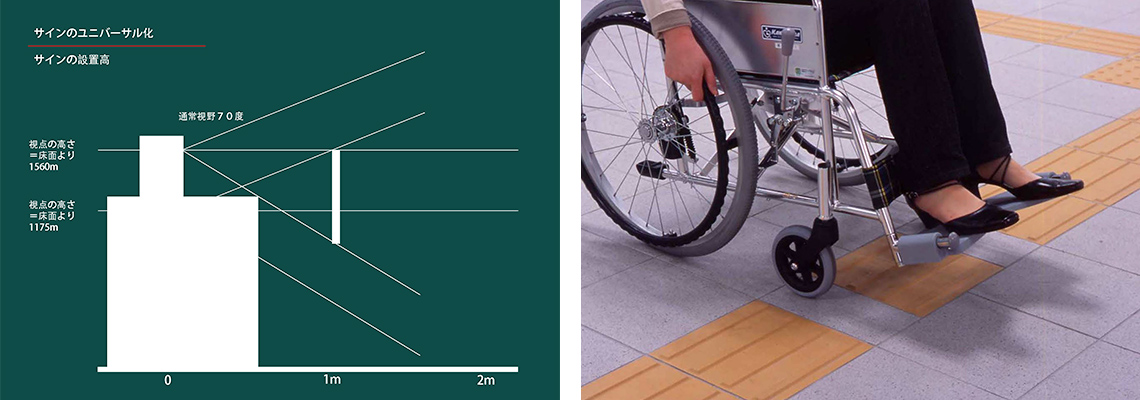
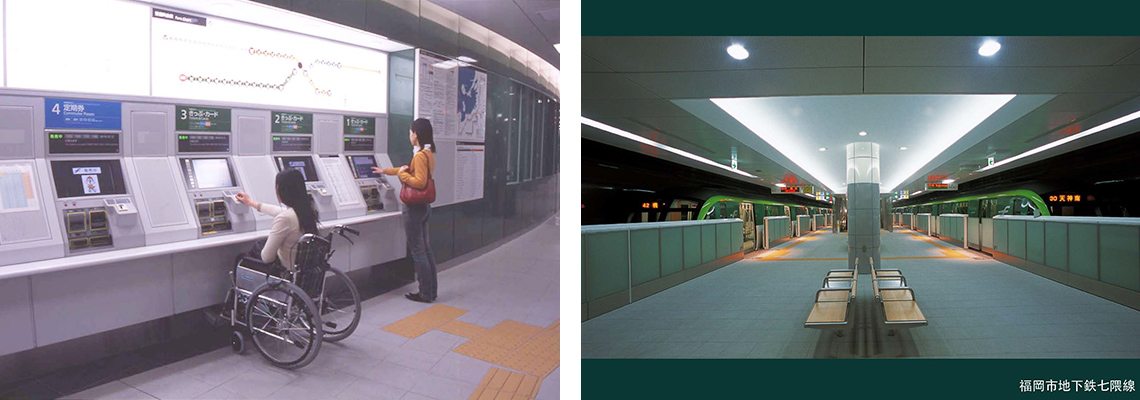
Fukuda, the moderator, raised a question about the ways to approach the senses other than the visual perception by lighting, and how it can be useful. Hara responded that he was expecting a new space to be designed by finding and integrating common language, as well as by approaching various user needs from other senses than visual. Matsushita went on to state that adding psychological factors to the design will be one element of design for future well-being and what lies ahead.
In conclusion, both stated that integration does not mean withdrawal. In other words, 1 + 1 = 2 while 1 × 1 = 1. 1 made of 1 × 1 × 1 × 1 is not negative but “1”, but it involves various elements–that is the definition of people-friendly space which led them to the conclusion.
【Date & Time】13:00‒14:00, March 7, 2019
【Venue】Room 102, 1F, Conference Tower, Tokyo Big Sight
【Speaker】Toshiaki Hara, Chief Architect, Kajima Corporation
Miki Matsushita, President, Miki Matsushita Lighting Design
【Moderator】Yoshiko Fukuda, Director, Nakajima Tatsuoki Lighting Design Laboratory inc.
【Organizers】IALD Japan, JLMA, Nikkei Inc.
Profile
Miki Matsushita
Founded Miki Matsushita Lighting Design Co., Ltd. 1989.
Created "Lighting Environments" including lighting designs for nationally recognized important cultural assets, formulation of lighting guidelines for national parks and towns, and a wide range of projects at educational, cultural, medical, transportation facilities and commercial establishments in Japan. She is also active with working as an advisor, council member, and university lecturer of Lighting Design.
Toshiaki Hara
"Kajima Corporation, Architectural Design Division. (1990-Present) Engaging in Design for Diversity putting importance on human five senses.
Japan Institute of Country-ology and Engineering, engaged in researches and the investigations for administrative policy on barrier-free. (2004-2006)"
Yoshiko Fukuda
"Nakajima Tatsuoki Lighting Design Laboratory inc,Director.(1997-Present)
Yokohama National University Venture Business Laboratory Part-time lecturer.(2009-2011)
Working on the lighting plan taking advantage of the psychological effects of light.
She wrote many books on lighting design."









